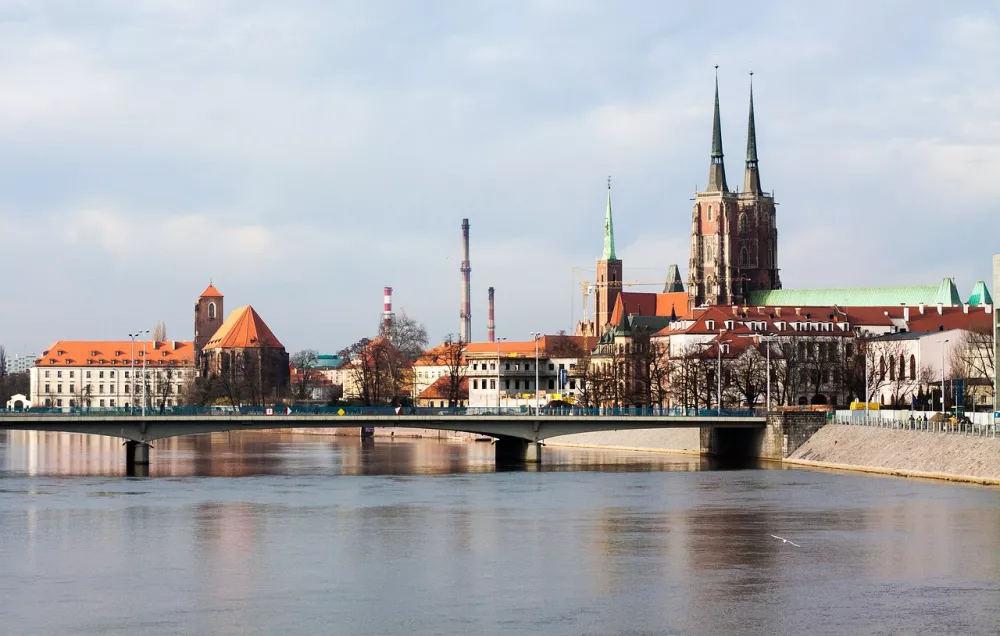Wroclaw - guide 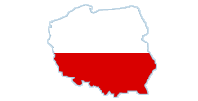
Stroll around the vast medieval square, surrounded by colorful town houses and Gothic-Renaissance town halls. And if you like an old-fashioned atmosphere, Tum Island with the Cathedral of St. John the Baptist will transport you straight to the oldest times of Wrocław. You can also go hunting for the little bronze gnomes scattered throughout the city (there are over 300 of them!). The city also offers a live music scene, bars for a few zlotys and modern attractions such as the Afrikarium in the local zoo.
Sights and attractions - What should you visit in Wrocław? Rynek, Town hall with astronomical clock, Tumski island.
Accommodation - Where to stay? In the historic center or in the countryside outside the center? In a luxury hotel, castle, guesthouse or hostel?
Typical food and drink - What you should try in Wrocław - pierogi, local beer, regular or perhaps brewed...
Practical tips - Here you will learn how to best move around the city, where to shop and similar.
Weather - What temperatures and rainfall to prepare for in the four seasons in Wrocław?
Personalities - What famous personalities lived and worked in Wrocław?
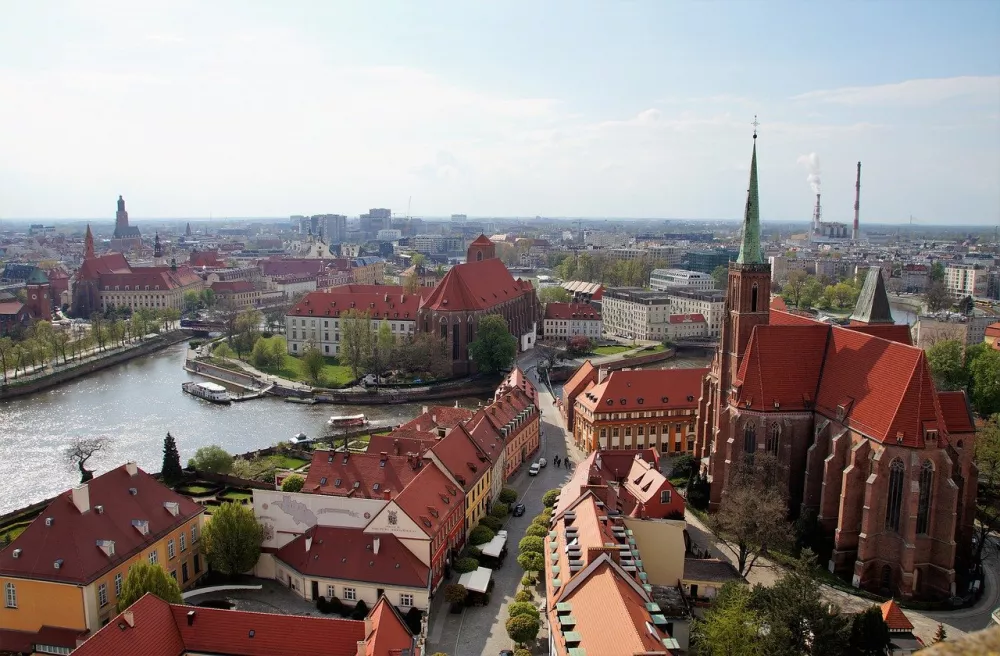
Wrocław (Polish: Wrocław), the capital of the Lower Silesian Voivodeship, is located in southwestern Poland. It is one of the oldest and largest cities in the country, with a rich history that goes back more than a thousand years.
You can find Wrocław on the Odra River, approximately 350 km southwest of Warsaw and about 270 km northeast of Prague. It is also often called the Venice of the North.
Over 640,000 inhabitants live in the fourth largest city in Poland.
Wrocław was founded in the 10th century and soon became an important commercial and cultural center. In various periods of its history, the city belonged to Poland, the Czech crown, Austria and Prussia.
After World War II, they annexed the city to Poland, and the population changed significantly due to post-war population movements.
Wrocław is an important economic center with developed industry, trade and services. The city is home to many international companies and technology firms, such as Volvo, Siemens or Hewlett Packard.
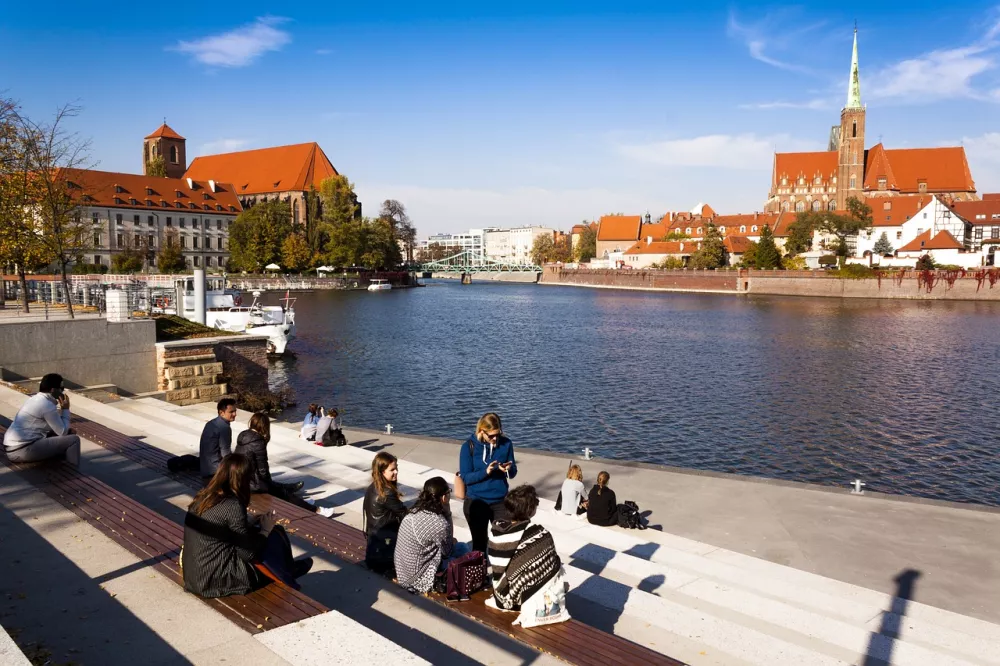
The best way to get to Wroclaw is by plane or train. Wrocław International Airport (Port Lotniczy Wrocław) offers connections to many European cities. There are direct connections to the local station from most major Polish cities and international destinations.
The University of Wroclaw, one of the oldest and most prestigious universities in Poland, was founded in 1702. In addition to the University of Wroclaw, the city has several other universities, including technical, economic and medical universities. Wroclaw is an important center of science and research, with a number of research institutes and innovative projects.
The city hosts many cultural events and festivals, including the Wrocław Film Festival and the "Jazz nad Odrou" festival, a tradition since 1964.
The city is home to an opera house, many theaters, concert halls, galleries and museums.
Sights and attractions
Market Square (Rynek) - One of the largest squares in Europe, covering an area of 3.8 hectares. It is surrounded by 60 beautiful town houses with richly decorated facades, some of which have their own names, such as "House of the Dragons" or "House of the Golden Sun". The square is dominated by the Old Town Hall, one of the best preserved Gothic town halls in Central Europe. Traditional markets, festivals and important events are held here, including the famous Christmas market.
Address: Rynek, Wrocław.
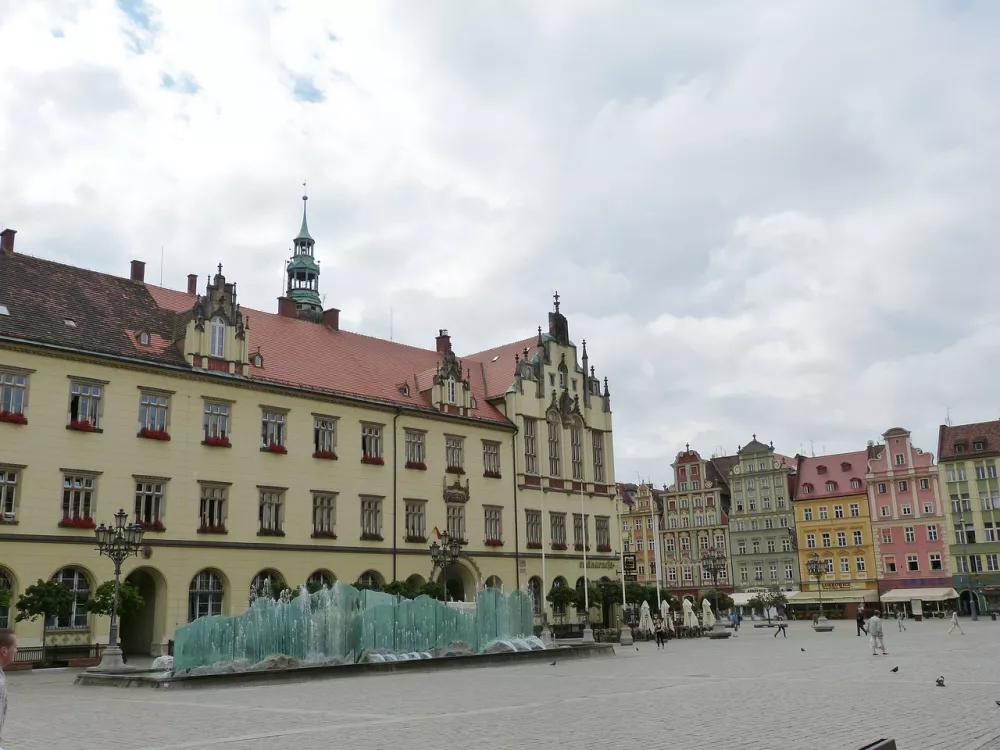
Old Town Hall (Ratusz) - A Gothic building from the 13th to 16th centuries. The Town Hall is easily recognizable by its 70-meter-high tower and richly decorated brick and sandstone facade. The facade of the Town Hall with its astronomical clock also attracts visitors' attention. In front of the building stands a copy of a medieval pillory from the 15th century. Today, the Town Hall houses the City Museum and a restaurant.
Address: Rynek 50, Wrocław.
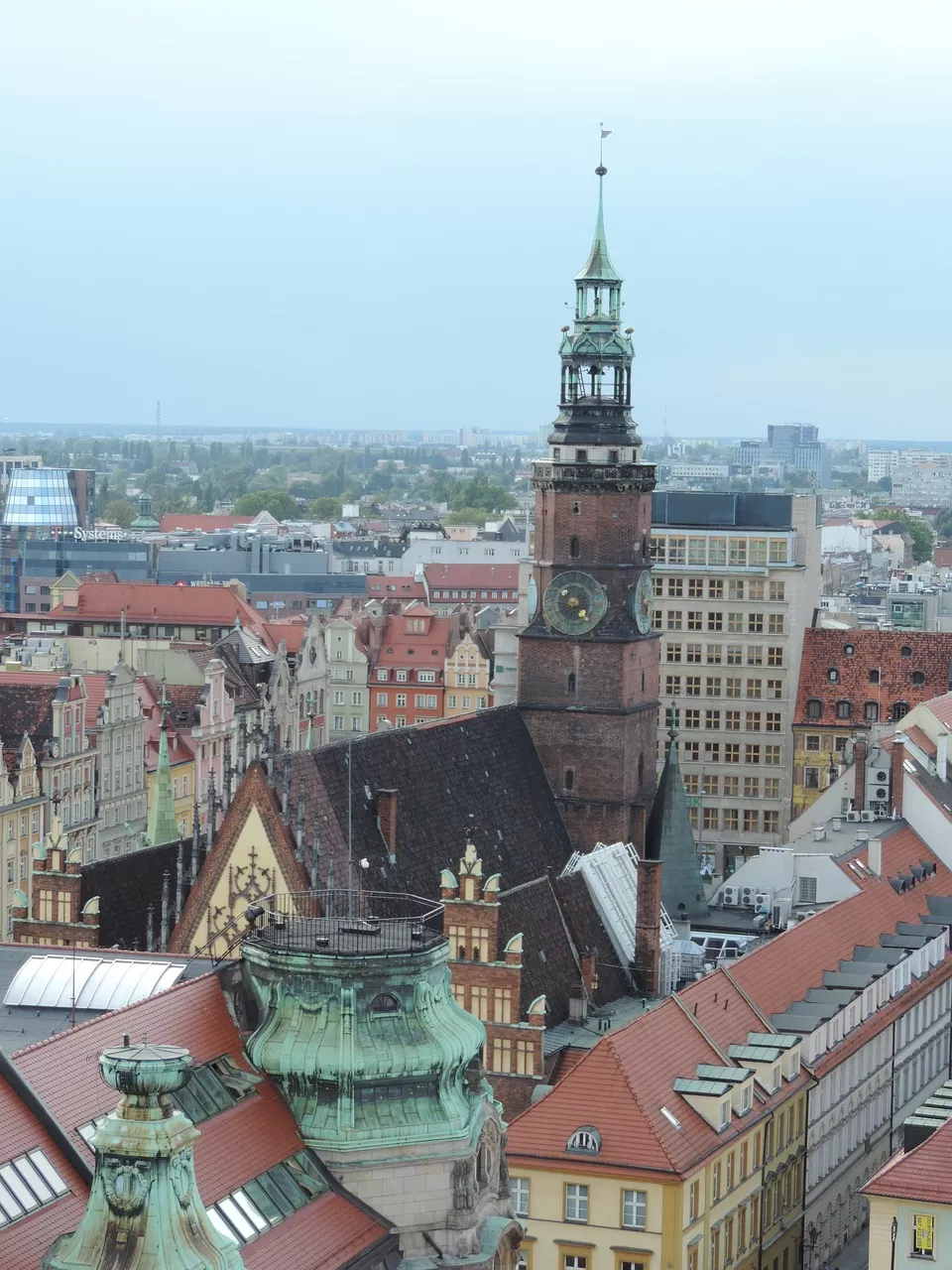
Tumski Island - The oldest part of the city with many historical buildings, including the Cathedral of St. John the Baptist, the Church of St. Giles and the Archbishop's Palace. The area is also famous for its picturesque streets and bridges. The first settlement here dates back to the 10th century, and it was here that the Bishopric of Wrocław was founded in 1000.
Address: Ostrów Tumski, Wrocław.
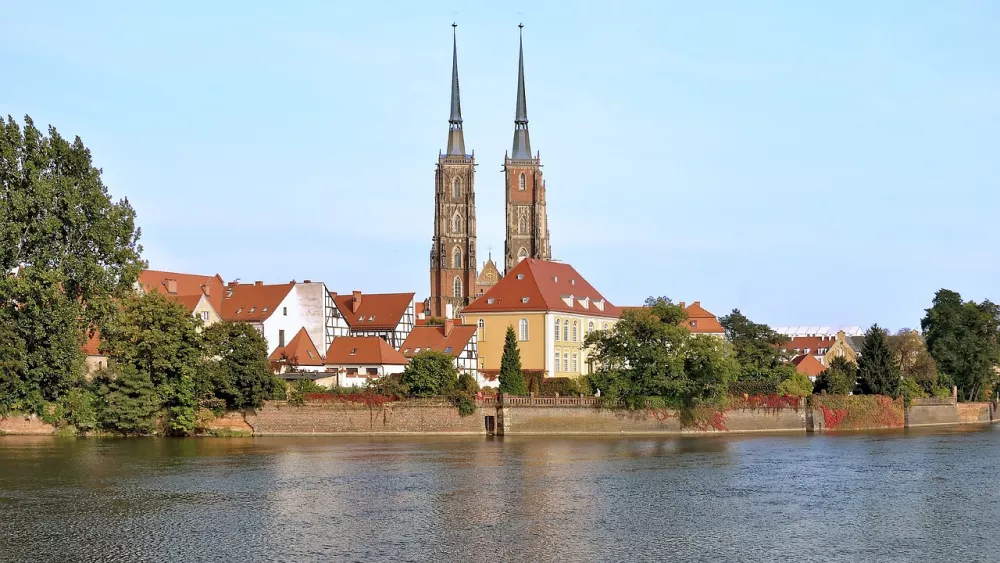
Cathedral of St. John the Baptist - Gothic cathedral on Tumski Island, built in the 13th and 14th centuries. It offers a magnificent view of the city from the tower. It is the most important sacral building in Wrocław. The cathedral boasts the largest number of stained glass windows in Poland and the largest organ in the country. The organ was built in 1913 and at that time was even the largest in the world!
Address: Plac Katedralny 18, Wrocław.
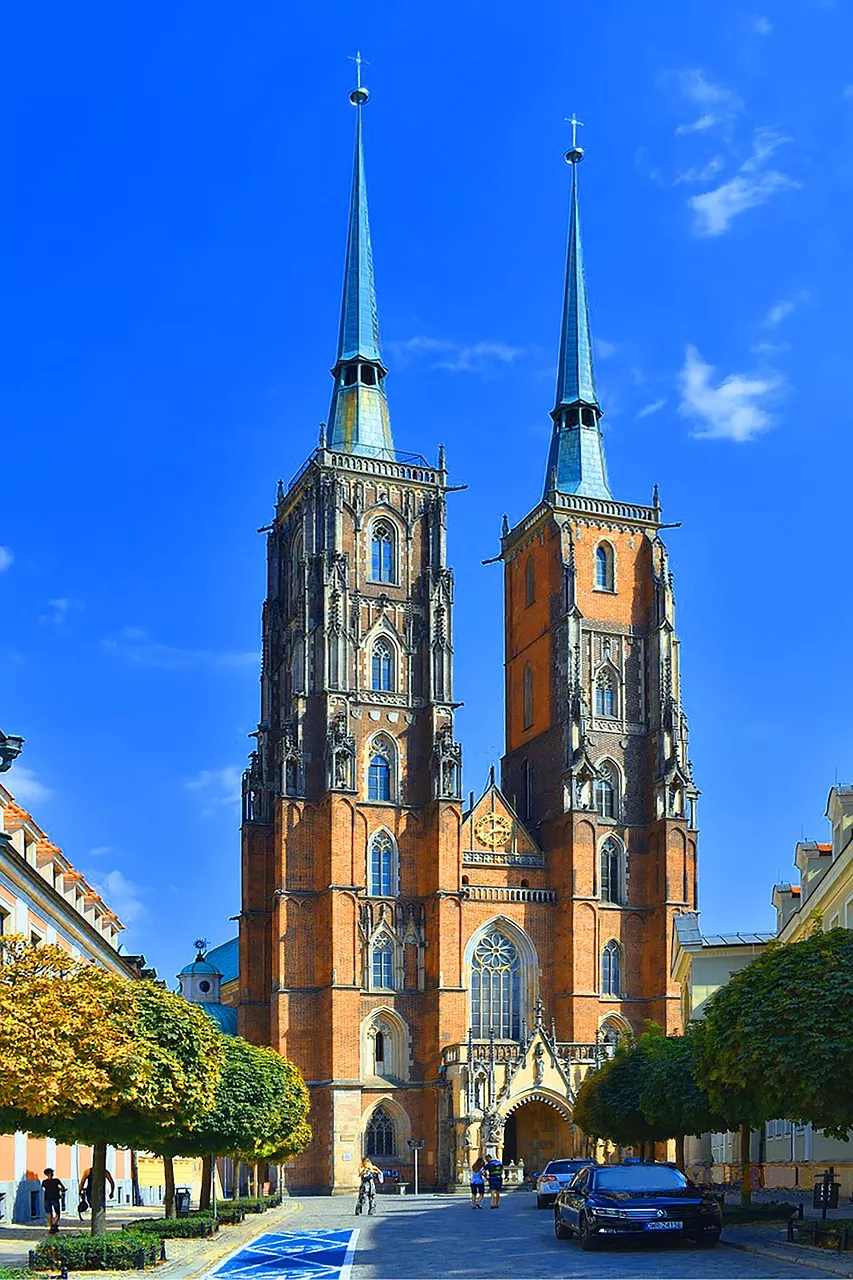
Panorama of Racławice - A magnificent panoramic painting depicting the Battle of Racławice during the Kościuszko Uprising in 1794. In the battle, Polish insurgent forces led by Tadeusz Kościuszko defeated the Russian army. The work measures 15 x 114 meters and is located in a specially designed rotunda in Juliusz Słowacki Park. Due to political circumstances, the painting was not made available to the public until 1985.
Address: Jana Ewangelisty Purkyniego 11, Wrocław.
Hall of the Century (Hala Stulecia) - A unique building listed on the UNESCO list, built in 1913 according to the design of Max Berg to commemorate the centenary of the victory over Napoleon in the Battle of Leipzig. This important building hosts various conferences, exhibitions and cultural events. It can accommodate up to 10,000 visitors.
Address: Wystawowa 1, Wrocław.

Japanese Garden - The garden was founded in 1909–1913 by Count Fritz von Hochberg, a lover of Japanese culture. The garden was created as part of the World Exhibition on the occasion of the centenary of the victory over Napoleon and combines various types of Japanese gardens – public, water, tea and with a stone beach. You will find original Japanese buildings, a tea pavilion, stone lanterns and over 200 species of trees and shrubs, of which almost 100 come from the Far East and 38 directly from Japan.
Address: Adama Mickiewicza 1, Wrocław.
Sky Tower - The tallest building in Wrocław and the fourth tallest in Poland, measuring 212 metres. This skyscraper and multifunctional complex has a total of 51 floors and offers an observation deck on the 49th floor with breathtaking views of the city and the surrounding area. Every year, the Sky Tower Run is held here, where competitors climb 1,142 steps to the top of the tower - the record time is under 5 minutes.
Address: Powstańców Śląskich 95, Wrocław.
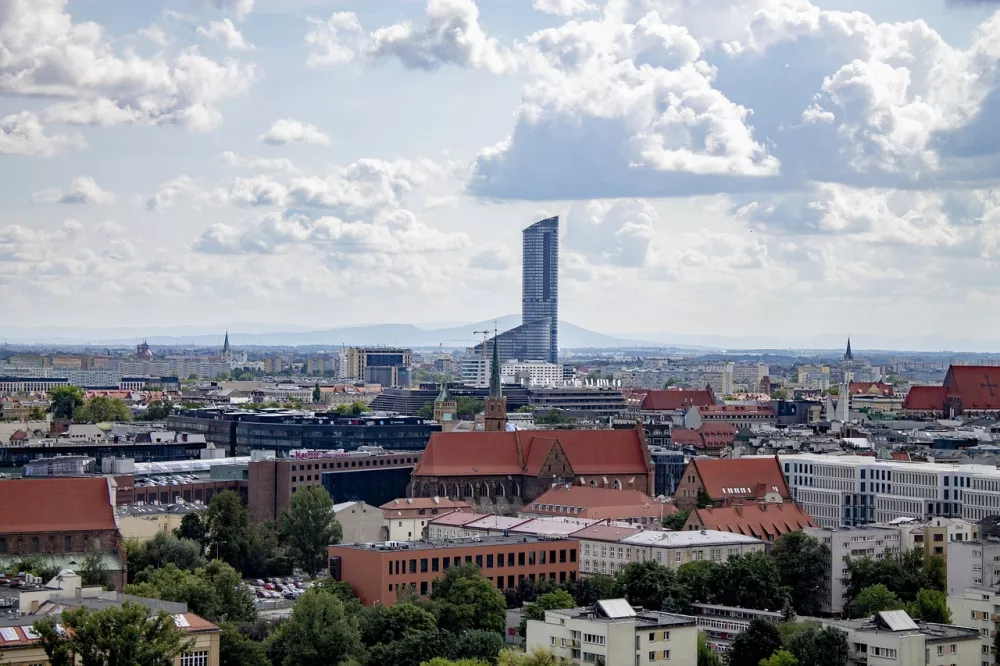
Dwarf Statues (Krasnoludki) - You can find several hundred small bronze dwarf statues all over the city. The statues are a symbol of the city and a popular tourist attraction. Their history dates back to the 1980s, when they became a symbol of resistance against the communist regime – the then happening movement Orange Alternative used a dwarf as its emblem. The first bronze dwarf was placed in the streets in 2001 as a monument to this movement and their number has been growing steadily since then.
Address: Vratislav.
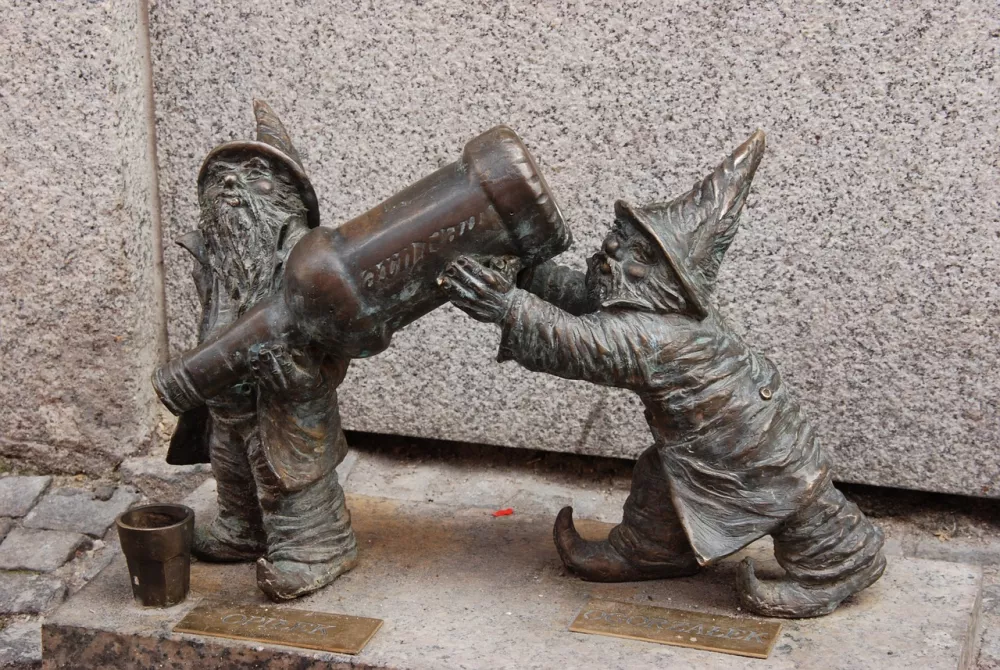
Multimedia Fountain - Located next to the Century Hall in Szczytnicki Park, it is one of the largest fountains of its kind in Europe. It offers a fascinating performance combining light effects, music, water choreography and 3D projections. During the warmer months (from May to October), free multimedia shows are held here, attracting visitors of all ages. The fountain was officially opened on June 4, 2009, on the occasion of the 20th anniversary of free elections in Poland.
Address: Wystawowa 1, Wrocław.
Accommodations
In Wroclaw, you can choose from almost 2000 different accommodation capacities. Popular apartments are the most represented, followed by hotels, hostels and boarding houses. If you want to be in the heart of the action, choose a hotel in the city center near Market Square (Rynek). For a calmer atmosphere and historical environment, you can choose Tumski Island, for example.
Hotel Altus Palace - Destigo Hotels belongs to the most luxurious hotels in Wrocław. You can find it in the Old Town. The hotel offers free bike rental and fitness. Guests have at their disposal a restaurant, a bar, a cafe, a steam sauna and a hot tub. The 24/7 reception offers luggage storage and concierge services.
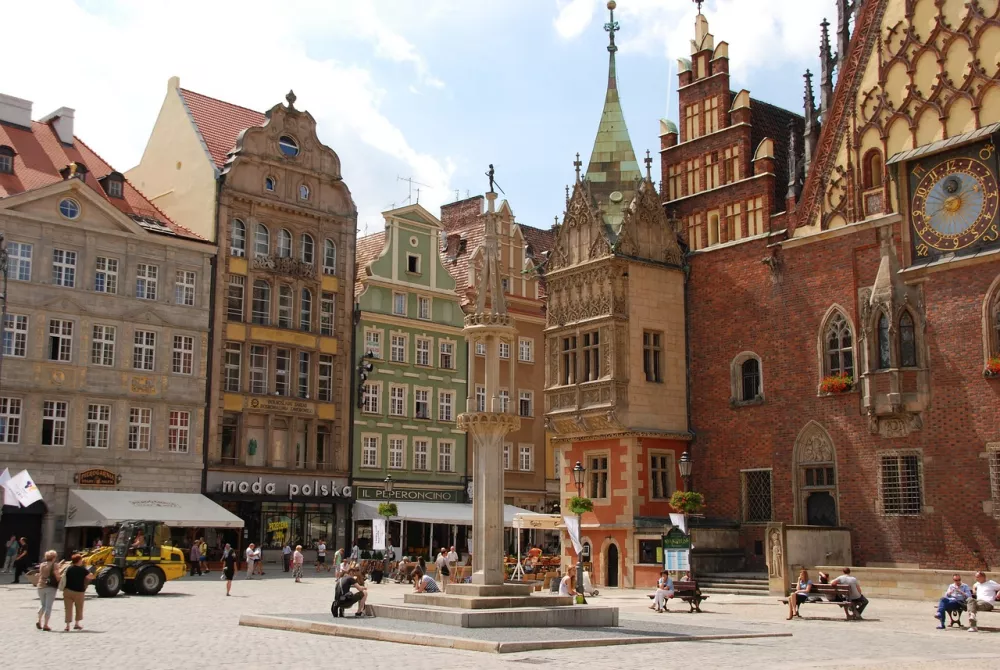
Both individuals and large groups looking for accommodation in the city center can book a room, for example, in the popular 4* hotel PURO Wrocław Stare Miasto. In the accommodation, you can use the garden, terrace, common room, game room, restaurant, cafe, bar or fitness. The hotel allows you to stay with your pets.
Those who want to feel special can stay in a castle, for example. Topacz Castle, located 8 km from the center of Wroclaw, is surrounded by a garden with a pond. You can relax here in the spa wellness center with an indoor pool and various types of saunas. The hotel restaurant serves Polish and Mediterranean cuisine. For active rest, you can use the tennis court, golf driving range or private sandy beach.
A pleasant guesthouse in the ancient building of the Academus Pub & Guest House offers rooms right in the historic center of the city. In the building, you can have refreshments in the restaurant on the ground floor. Adults can enjoy themselves in the casino, children in the playground. There is also a mini market in the building.
Cheap accommodation 4 km from the city center is offered by Willa Zacisze - Pokoje Gościnne. Some rooms have a patio overlooking the lake, some have a balcony. The pension is surrounded by a garden with a sun terrace with outdoor furniture. The accommodation does not offer breakfast, but you can prepare your own food in the shared kitchen. You can use the sauna for an additional fee.
Rynek 30 hostel offers cheap accommodation right in the heart of the city, 90 meters from the Wrocław Town Hall. You can stay in shared or private rooms. Some rooms have a shared bathroom, others are private. From some rooms you can enjoy a view directly of the ancient town hall. You can prepare your meals in the shared kitchen.
For a complete offer of accommodation in Wroclaw, we recommend using A-HOTEL.com or Booking.com.
Typical food and drink
Wrocław, like the whole of Lower Silesia, offers a wide range of traditional Polish dishes, also influenced by German and Czech cuisine.
Pierogi - Filled dumplings made of dough that are filled with various fillings, such as meat, potatoes, cheese, cabbage or a dessert with fruit. They are served boiled or fried, often with sour cream.
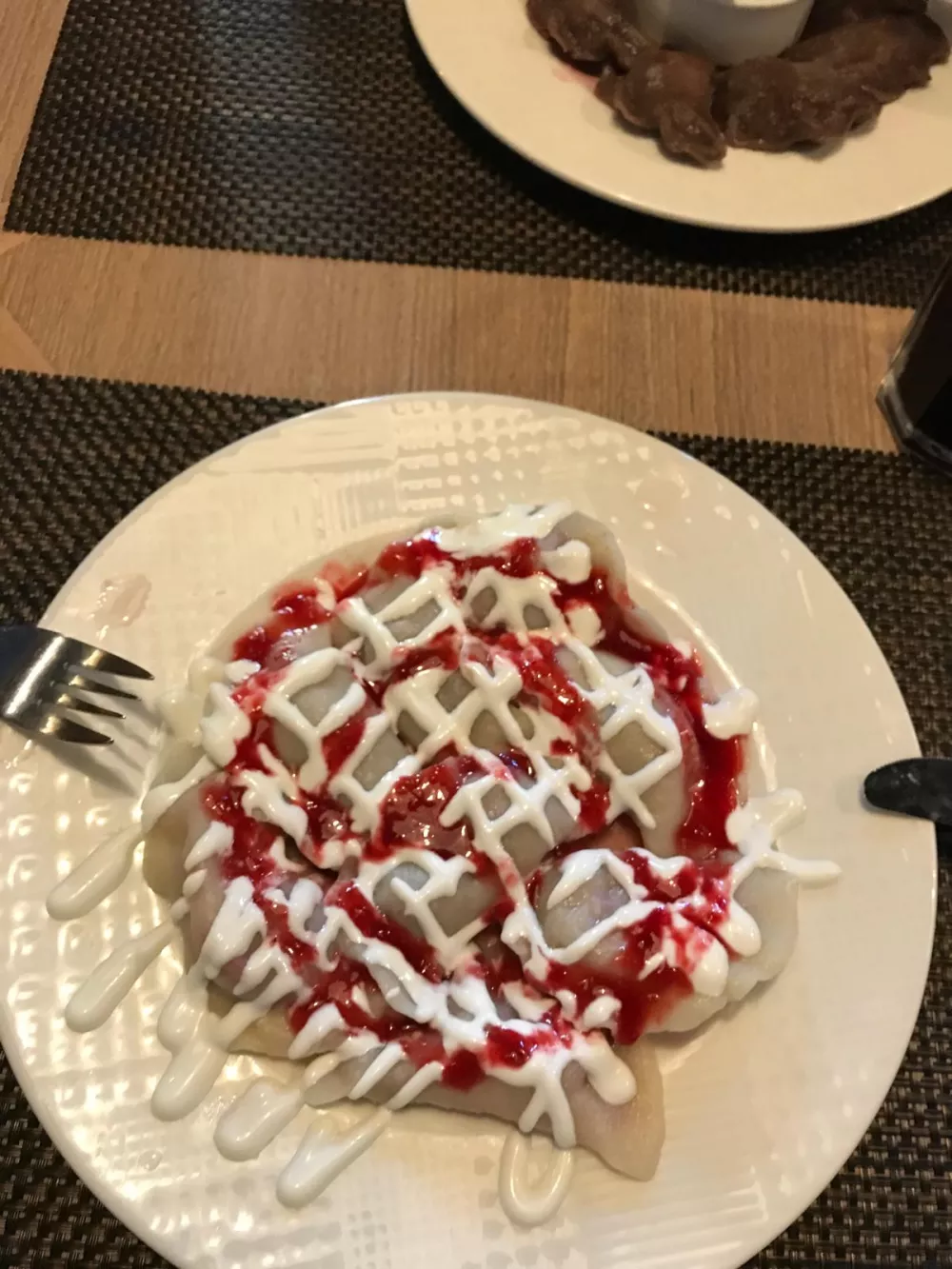
Bigos - A traditional Polish stew made from sauerkraut and fresh cabbage, various types of meat and sausages, often flavored with prunes, mushrooms and spices.
Żurek - Sour soup made from rye sourdough, served with sausage, egg and sometimes potatoes. The soup has a distinct taste thanks to fermented yeast.
Dumplings (Kluski śląskie) - Typical of Silesia, these potato dumplings are round and have a characteristic dimple in the middle. They are often served with meat and sauce.
Golonka - Roasted pork knuckle, popular in Polish and German cuisines. Served with mustard, horseradish and sauerkraut.
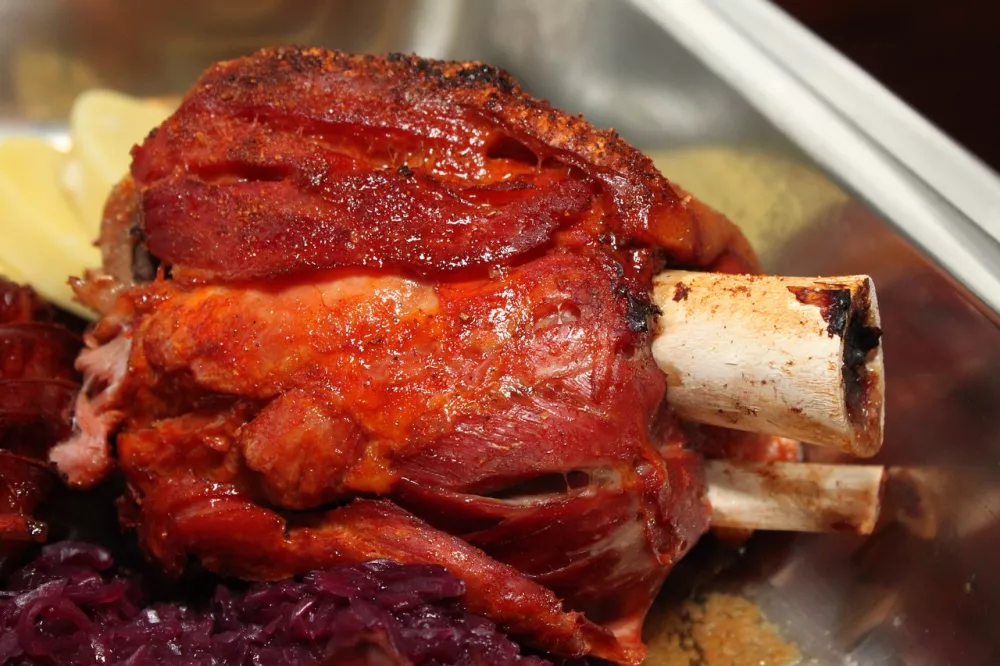
Vodka - Polish vodka is famous all over the world. In Wrocław you will find a wide range of local brands. You can taste different types, including traditional flavored variants like rye, potato or fruit vodka.
Miód pitny - Traditional mead, popular throughout Poland. This alcoholic drink is made by fermenting honey and water, often flavored with herbs and spices.
Beer - Wroclaw has a rich beer tradition and recently many small breweries and beer bars have appeared here. Famous brands include, for example, Piast.
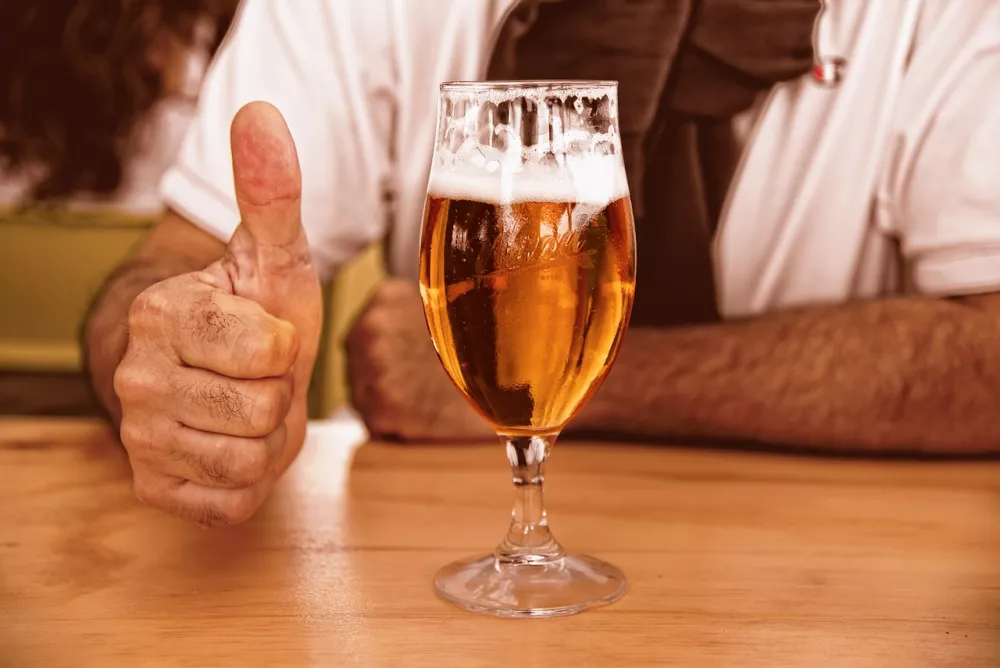
Grzaniec – Brewed beer. Around Christmas and actually throughout the winter in Poland, you can also warm yourself up with beer - brewed with cloves, cinnamon and sugar.
Compote - A soft drink made from boiled fruit. It is served warm or cold.
Practical advice for the trip
How to get around the city - Wrocław has an extensive network of trams and buses. Tickets can be bought from machines at bus stops or in the MPK Wrocław app. Taxi services and Uber are readily available and affordable.
Many of the main sights are within walking distance of the centre. You will especially enjoy pleasant walks in the area of the Old Town and Tumské Island.
In Wrocław you will also find many cycle paths. You can rent a bike at the accommodation or at a bike sharing service such as Nextbike.
You can also admire the city from another perspective - while sailing on the Odra River.
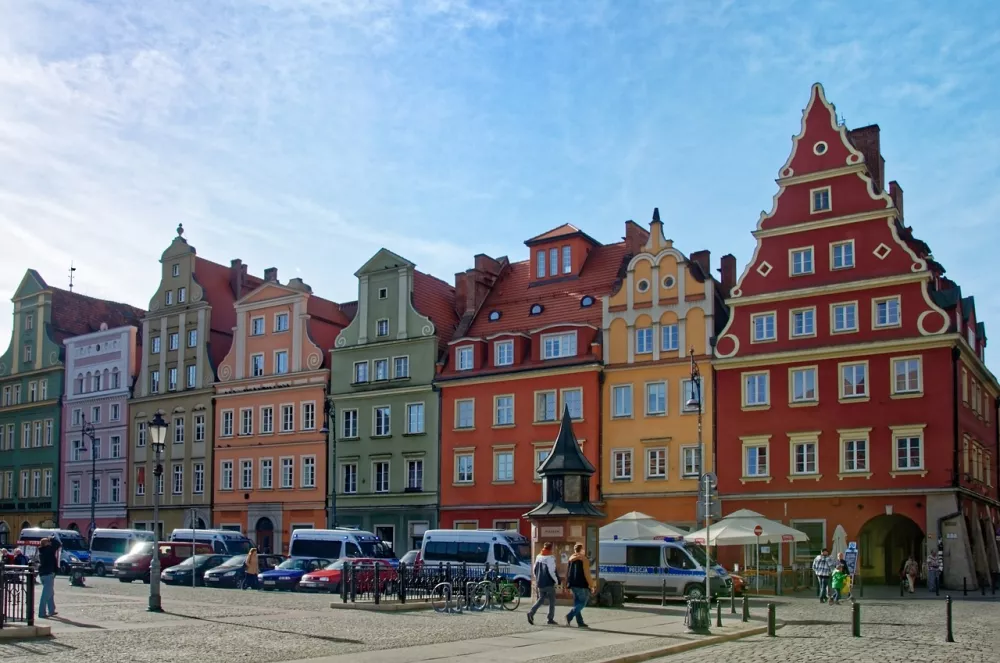
You can easily get to Wrocław by train. Wrocław Central Station is located in the center of the city.
Where to shop - Galeria Dominikańska - Large shopping center near the center.
Wroclavia - A modern shopping and entertainment center near the main train station.
Market Square - Many shops offer here traditional Polish souvenirs such as ceramics, lace or regional food.
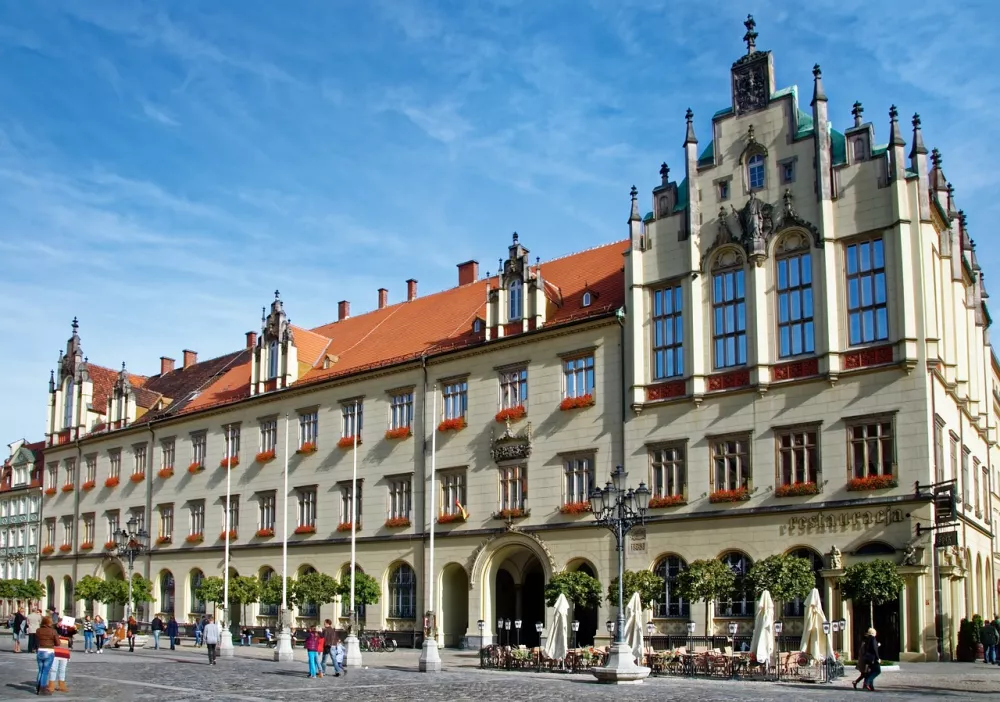
Most places accept credit cards, but it's a good idea to carry cash for smaller shops and stalls.
👍 Our tip: Hydropolis - an unusual experience center dedicated to water. You can find it in an old underground storage facility (Na Grobli 17). This interactive museum will captivate both adults and children with a number of technological presentations and exhibits focused on the topic of water, ecology and natural sciences. Here you can delve into the secrets of water in all its forms, from its role in nature through technology to the history of water use by humans.
Weather
Wrocław has a temperate continental climate with oceanic influences. This means that you can experience four distinct seasons here, with relatively mild winters and warm summers.
In spring, average temperatures range from 5°C in March to 15°C in May. There is light but unpredictable rainfall, so we recommend carrying an umbrella or raincoat with you at all times. Nature comes to life, parks and gardens start to bloom, and tourists and locals alike can enjoy walks and outdoor activities.
In warm summer, average temperatures range around 20-25°C, sometimes reaching 30°C. In summer, it often rains and storms.
Autumn starts with pleasant temperatures in September (around 15-20°C) and gradually cools down to 5-10°C in November. Autumn can be damp and foggy. On the other hand, the autumn colors transform the city into a picturesque landscape, which is a great time for photography and walking.
In winter, average temperatures are around 0 °C, it often freezes, especially at night. It does not snow very often, winters are rather drier. In winter, you can enjoy Christmas markets and festivities, visits to museums, the opera, etc.
Wrocław can be visited all year round, each season has its own charm and offers different options for enjoying the city.
Famous personalities associated with Wroclaw
Fritz Haber (1868–1934) - German chemist who won the Nobel Prize in Chemistry in 1918 for his discovery of the synthesis of ammonia, which was of great importance for the production of fertilizers. He was born in Wroclaw.

Max Born (1882–1970) - Physicist who won the Nobel Prize in Physics in 1954 for his seminal contributions to the theory of quantum mechanics. He studied and taught at the University of Wroclaw.
Edith Stein (St. Therese Benedict of the Cross) (1891–1942) - Philosopher and Catholic saint, born in Wrocław. She converted from Judaism to Roman Catholicism, later becoming a Carmelite nun. She was killed in the Auschwitz concentration camp. She was canonized in 1998.
Gerhart Hauptmann (1862–1946) - German playwright and winner of the Nobel Prize for Literature in 1912, representative of naturalism. He studied in Wroclaw.
Ferdinand Lassalle (1825–1864) - German socialist politician and founder of the first German Workers' Party. He was born in Wroclaw.
Olga Tokarczuk (1962) – Today's most widely read Polish writer and laureate of the 2018 Nobel Prize for Literature. She has her own publishing house in Wrocław, often visits the city, and lives in the nearby town of Krajanów.
